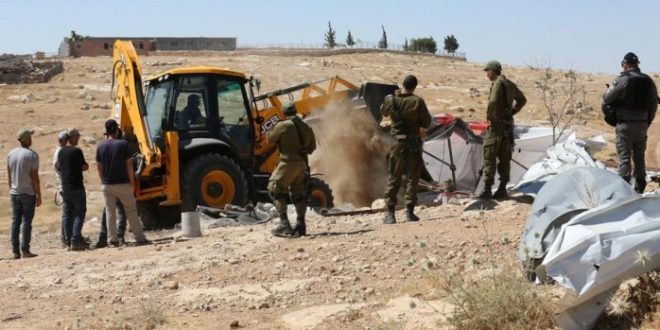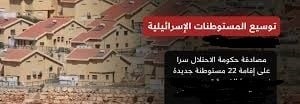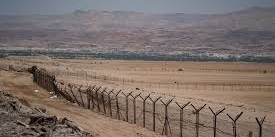By: Madeeha Araj
The National Bureau for defending land and resisting settlements ( nbprs ) stated in its latest weekly report , that suffering of the Palestinian people in Hebron Governorate, especially in Masafer Yatta, is no longer limited to a harsh life and deprivation of the basics of life and the right to live in homes that protect them from the cold winter and summer heat. Rather, it extends far beyond that. The occupation authorities continue the ethnic cleansing operations using various means, including the recruitment of settlers to carry out this task under the protection of the occupation army. Extensive demolitions affect the simple homes of citizens under the pretext that they were built without a permit, which has caused over the years, the displacement of a large number of local residents, who describe that as an ethnic cleansing campaign in favor of what they see as the occupation’s ambitions for expansion, especially with the presence of a number of nearby settlements.
Masafer area is witnessing a daily escalation and attacks on citizens and their property, aimed at intimidating citizens, putting pressure on them and displacing them from their lands, in favor of expanding the settlements forcibly built on their lands. The threats of the occupation and its settlement ambitions affect the residents of an area whose land area is about 38,500 dunums, which are gatherings where more than 3,000 citizens reside in.
As for the brutal attack carried out by settlers on the village of Al-Mafqara, located on the outskirts of Yatta, where Israel has been seeking for decades to uproot and destroy it, dozens of masked settlers were moving from house to house, using knives and hammers, smashing windows and car windows, and throwing stones hit the children, including a 3-year-old child, Moh’d Bakr Hamamda, who was taken to the hospital with severe head injuries, while the occupation soldiers helped them by firing tear gas canisters against the citizens. Knowing that Al-Mafqarah is one of the 12 villages, which are threatened to be uprooted and displaced, under the pretext of being training area 918, which was designated for military training.
At the time, Ehud Barak, the Israeli High Court allowed the return of people by temporary order, but didn’t allow them to restore buildings, infrastructure and construction according to the natural increase and the development of needs. About a year ago, the Akfut Institute revealed a document proving that there is a clear intention to stop the natural Palestinian development in the region, and it stands behind Israel’s declaring the southeast of the West Bank a training area. In that document, the Minister of Agriculture at the time, Ariel Sharon, at a meeting of the joint settlement committee with the government and the Histadrut on July 12, 1981, he presented his ideas on that and other training areas on the border between the slopes of Mount Hebron and the so-called Judean Desert.
Sharon made it clear that the government has an interest in the army’s presence in these areas because of the spread of Arabs on the mountainside towards the desert. Following that session, an area of 33,000 acres, which is the public and agricultural space for Masafer Yatta gatherings, was declared a military zone. In Hebron, the head of “Keren Kemet Le-Israel” (the Permanent Fund for Israel – “Kacal”), Abraham Duvdovani, and representatives of the right-wing parties in “Kacal” are seeking to prevent the eviction of settlers who occupied a building in the occupied city of Hebron, despite a court decision to do so, knowing that the right-wing parties requested a legal opinion on the possibility of depositing NIS 180,000 by “Kakal” to ensure the continued settlement of settlers in the Bakri family building, which has been fighting a legal battle for years and demanding the settlers’ eviction from its home.
An Israeli court has issued a decision, in March 2019, to vacate the Bakri family’s building. Shortly after the court’s decision, a settler named Asher Horovitz, who lives in one of the building’s apartments, submitted a request to the court not to implement the eviction order, claiming that a company Himnuta, affiliated with Kakal, bought the apartment in which he lives. Last July, the court decided not to evict the settler Horovitz from the Bakri family’s building as long as a review is being conducted to clarify the allegations of “Himnuta” buying the apartment, provided that NIS 180,000 are deposited in five installments in the court’s treasury. The court considered that this amount constitutes an allowance for the use of the building for five years, which is the period during which the clarification procedures of the alleged deal are expected to continue.
On the other hand, the annual report of the United Nations Conference on Trade and Development (UNCTAD) was issued on economic developments in Palestine in 2020, where it stressed that settlement expansion undermines the prospects for the two-state solution, strips the Palestinian people of their land and natural resources, as well as their inalienable right to development, and entrenches the occupation. The report pointed out the continued loss of land and natural resources for the benefit of the settlements and the leakage of financial resources to the Israeli treasury, and the damage to the economy in Gaza due to the prolonged siege, and the repeated military operations. It also indicated that the escalation of the threat by the occupation authority to annex large areas of the West Bank, made matters worse.
The UN Special Coordinator for the Middle East Peace Process, Tor Wencesland, also stressed the illegality of Israeli settlements in the occupied Palestinian territories, and considered them to undermine the principle of the two-state solution. This came in a testimony by the UN official during the monthly UN Security Council session on the situation in the Middle East, including the Palestinian issue, where he reiterated that all Israeli settlements are illegal under international law, and that they undermine the prospect of achieving a viable two-state solution in line with UN resolutions, and International law and previous agreements.
List of Israeli Assaults over the Last Week Documented by the National Bureau:
Jerusalem:
- A provocative Israeli march roamed the Batn Al-Hawa neighborhood in the town of Silwan on the occasion of the Jewish holidays starting from the outpost of “Beit Yonathan”.
- Opening fire at the school students in the “Ras Al-Amud” neighborhood, causing fear and panic among them.
- Forcing a Jerusalemite in the Al-Thawri neighborhood to demolish part of his house with an area of 50 m2, in order to avoid paying high fees with a violation of 16,000 NIS which was imposed on the family about 5 months ago, noting that the house was built before 1967.
Hebron:
- Seizing a bulldozer while working on reclaiming land in the Ain Fares area under the pretext that this land belongs to the Israeli authority.
- Attacking the citizen’s and their homes in several communities and ruins in Al-Mafqarah, Al-Tuwani, Al-Saifr, and Umm Al-Toba in the Masafer Yatta, south of Hebron, smashed a number of their vehicles and solar panels, uprooted dozens of trees and crops.
- The Hebrew Channel 13 published a video clip and pictures of Israeli attacks targeted 10 Palestinian homes, punctured tires of several cars, and damaged a tractor and a water tank.
- Forcing the citizens of the Masafer Yatta to leave their lands near the village of Lasifer in Masafer Yatta, attacked the herdsmen in the mentioned village, prevented them from grazing their livestock on their lands, and forced them to leave it.
Bethlehem:
- Attacking the two brothers, Suleiman and Odeh Al-Rashaida, forced them to leave the place in the village of Al-Rashaida, east of Bethlehem.
- Planting an agricultural area located in the Danyan area, east of the town, with olive seedlings in preparation for its seizure.
- Storming the Ain Al-Hawiya area in the village of Husan, west of Bethlehem, where there is a water spring and has different types of seedlings, with the aim of seizing it for the benefit of the Israeli settlements.
Nablus:
- Storming the Joseph’s Tomb, east of Nablus, and performing Talmudic rituals under strict Israeli protection.
- Closing the main school gate of Al-Sawiya Al-Laban Secondary School, south of Nablus, located on the road between Ramallah and Nablus, using “oxygen welding”.
- Attacking the Al-Lubban Al-Sharqiya Girls School, located on the main Ramallah-Nablus Street, closed the school gate as well.
- Attacking the house of Um Ayman Soufan and targeting windows with paint cans in the Burin village.
Jordan valley:
- Storming the Hammamet Al-Maleh area in the northern Jordan Valley, and inspecting the citizens’ tents. It should be mentioned that the Israeli forces constantly stormed the area after notifying the citizens of the removal of the Al-Maleh school about two weeks ago.
Jenin:
- Handing a demolition notice to the house of the injured prisoner’s family, Muhammad Adnan Al-Zara’ini, in the town of Burqin, southwest of Jenin.
 المكتب الوطني للدفاع عن الارض ومقاومة الاستيطان منظمة التحرير الفلسطينية
المكتب الوطني للدفاع عن الارض ومقاومة الاستيطان منظمة التحرير الفلسطينية




